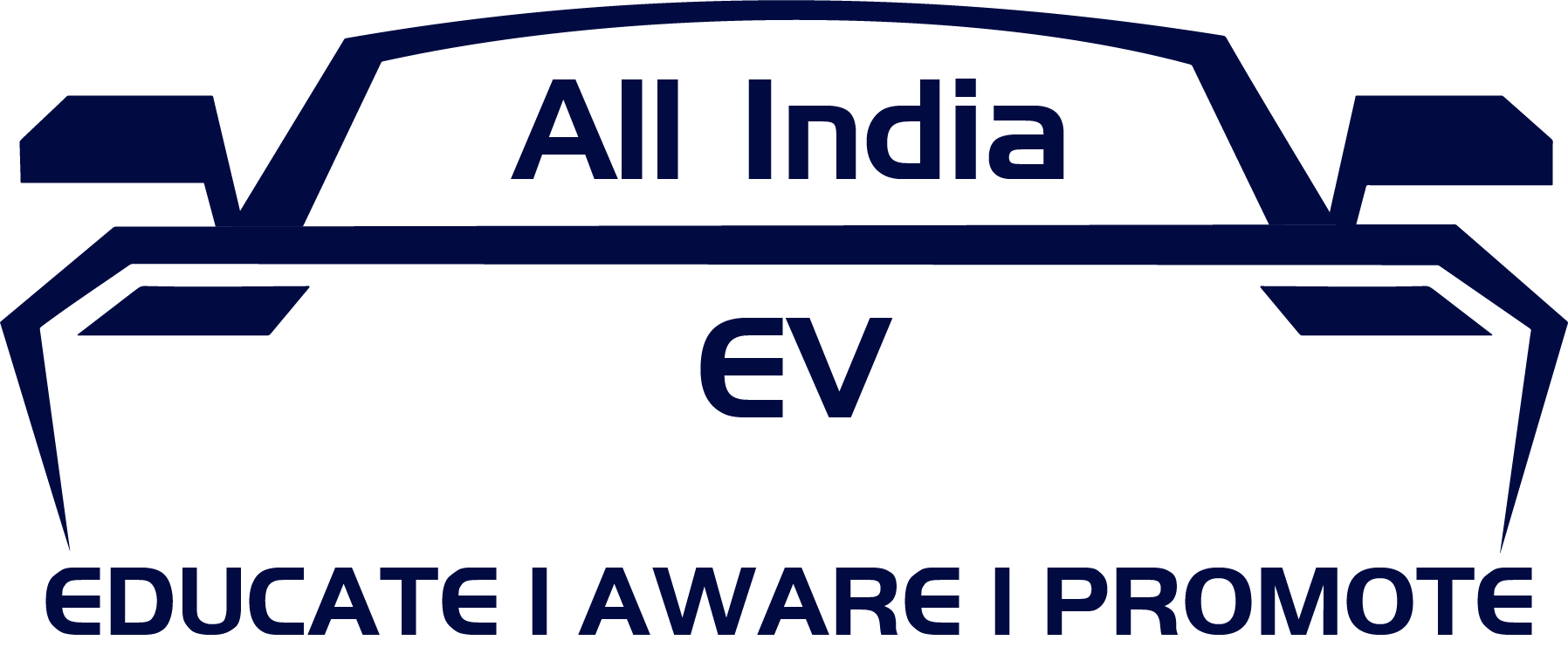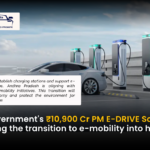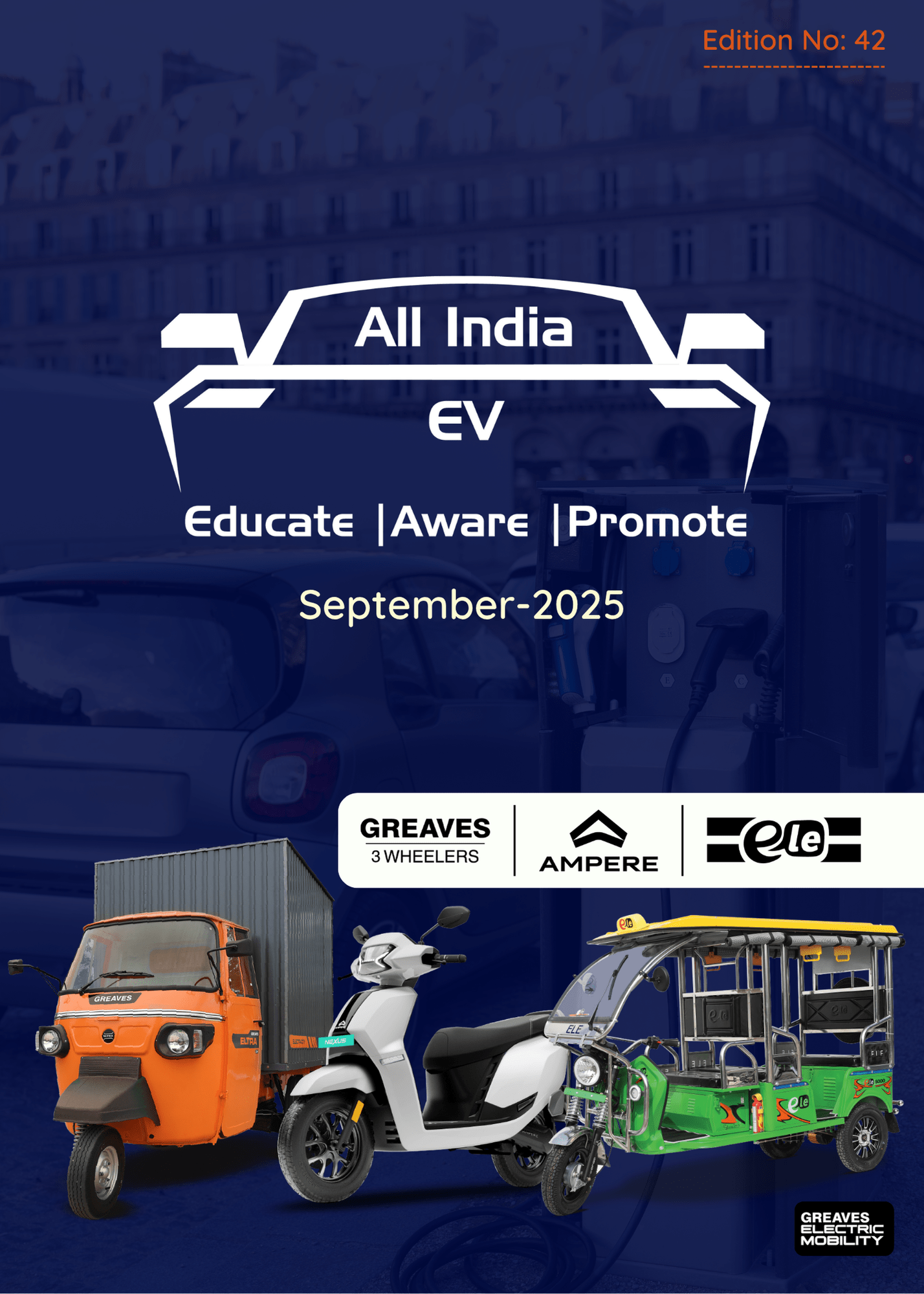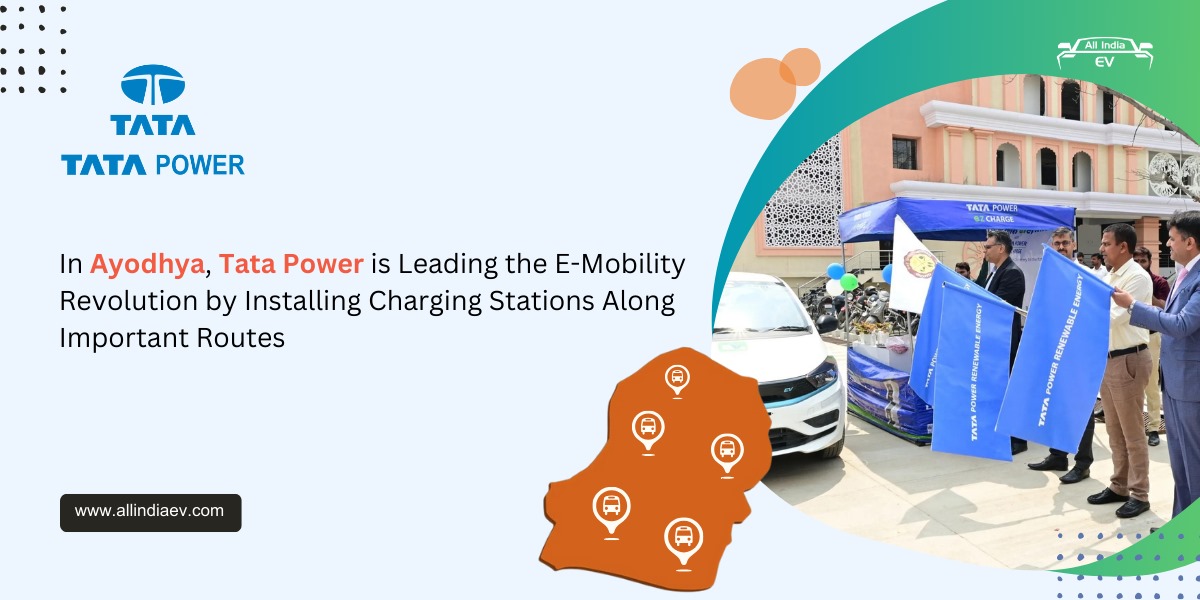
In a country where electric mobility is racing ahead, charging infrastructure still struggles with cables, chaos, and constraints. But what if charging your EV was as simple as parking it? No plugging in, no waiting, just effortless energy transfer.
At India EV, we had the privilege to sit down with the brilliant minds behind Watt Wave, an Ahmedabad-based startup that’s reimagining how EVs, drones, and warehouse robots charge—completely wirelessly. From a humble college project to a high-efficiency solution already collaborating with global names like Terra Motors, Watt Wave’s story is a testament to India’s deep-tech potential.
In this exclusive conversation, we explore their journey, struggles, technical breakthroughs, and bold vision for a future where charging is invisible, intelligent, and everywhere.
- What moment or realization sparked the decision to turn your student project into a full-fledged startup?
The turning point came when we were selected as one of the top 25 finalists in KPIT Sparkle, which gave us the opportunity to attend a 5-day boot camp at iCreate, Ahmedabad. That was the first time I truly saw the power of the startup ecosystem—how it could help take an idea from the lab to the market. I saw startups like Charge Zone and Clean Electric making significant strides in clean mobility, and it made me realize that we could do the same.
That’s when I decided to transform our project into a startup with a mission: to revolutionize EV charging by making it hassle-free, wireless, and convenient for users—while also contributing to India’s clean tech and sustainability goals.
- You’ve mentioned working 12+ hour days for over a year—what kept you going through those grind phases?
Yes, honestly, it was one of the toughest phases. The technology we were working on back then was still in research papers—there were no clear roadmaps or reference designs. We were trying to build something from scratch, and even getting a basic proof of concept to work felt like moving a mountain.
We put in our own money, skipped classes, and sometimes even survived on just one meal a day just to make that tiny 12V LED glow wirelessly. I remember days when I sat at the test bench from morning to night, and nothing worked. I once got so frustrated that I threw the whole circuit board against the wall. But despite those breakdowns, what kept us going was the unwavering support of our team and our families.
It took nearly two years, but not once did anyone in the team say, “Let’s quit.” We always said, “It’ll take time, but we’ll make it happen.” Our families also played a huge role—they never told us to stop focusing on the project or just study. Instead, they encouraged us to stay calm, think clearly, and try again. That belief gave us the energy to push through every single day. We would leave home at 10:30 AM and return by 11:00 PM, locking the college gates behind us. It was sheer determination and the dream of building something meaningful that kept us going.
- What were the biggest technical hurdles in achieving 86–88% efficiency in wireless charging—and how did you overcome them?
In the beginning, we used off-the-shelf induction coils and could barely achieve 65–70% efficiency at an 8 cm distance which clearly wasn’t acceptable, especially since low efficiency is already a major drawback of wireless systems. That pushed us to dig deeper.
We ended up going through more than 50 design iterations changing coil geometries, experimenting with different wire gauges, trying various shielding techniques, and reworking the overall coil structure. The biggest challenge was that we had no prior experience in this domain. Every parameter be it coil spacing, turns, ferrite placement, or wire type—was new to us, and each decision could drastically affect the performance.
We relied heavily on available research papers, simulation tools, and sheer trial and error. Slowly, we started learning what works and what doesn’t. Through that process, we were able to tune our system to achieve 86–88% efficiency even at 14.5 cm coil spacing, which is quite rare. It was painful and time-consuming but ultimately, the constant iteration and learning mindset made it possible.
- What makes your wireless charger different from or better than the ones developed by international players?
Most international wireless charging systems are designed for premium segments like luxury cars or specific use cases with high cost, tight alignment requirements, and limited adaptability for the Indian environment. Our solution, on the other hand, is built ground-up for the Indian market specifically for 3 and 4-wheel electric vehicles, where cost, efficiency, and ruggedness matter the most.
What makes us different is:
- Our system is cost-effective, without compromising on performance.
- We’ve also custom-engineered the coil design, shielding, and thermal management to work reliably in Indian climates, dusty environments, and varied use cases.
- Finally, our vision goes beyond hardware we’re building an ecosystem for hassle-free, contactless charging that supports mass adoption, not just premium use.
- We not only want to develop for EVs but also for Drones and Warehouse automation robots as well.
In short, we’re not just replicating what’s out there we’re redefining wireless charging for India and other emerging markets.
- How scalable is your 1.2 kW prototype, and what’s the roadmap to move from e-rickshaws to 4-wheelers or beyond?
Our current 1.2 kW wireless charger is designed for a 3-wheeler battery, and we are collaborating with Terra Motors, a Japan-based company for testing. That testing gave us valuable insights and a clear technical roadmap helping us identify areas for optimization in real-world conditions.
Now, we’re scaling up. Our next products are targeted at:
- 3.3 kW and 7.2 kW systems for electric 4-wheelers covering both slow and fast charging use cases.
- 11 kW wireless charging systems for electric buses designed to be installed at bus depots or stops where vehicles are idle, enabling seamless top-up charging without manual intervention.
Beyond EVs, our technology also caters to:
- Drones, where frequent battery swaps or wired charging are impractical. We’ve developed landing pads that allow drones to automatically land and recharge before taking off again.
- Warehouse automation robots are used in facilities like Flipkart or Amazon, where continuous operation is key. Our contactless charging pads ensure these robots recharge autonomously during short idle times without human handling.
In short, our platform is highly scalable not just in power, but across industries. We’re building a flexible wireless charging ecosystem that can power everything from last-mile mobility to industrial automation.
- How did your collaboration with Terra Motors come about, and what’s been the learning from working with them?
Interestingly, our collaboration with Terra Motors began through LinkedIn, where we received a message expressing their interest in exploring a partnership. That initial outreach led to multiple technical discussions and parameter reviews. After a few rounds of meetings, we signed an NDA in November 2024 and officially began our collaboration.
Since then, we’ve been co-developing and customizing our wireless charger to match their specific vehicle requirements. We are now in the final stages and close to starting real-world testing with their team.
The biggest learning from this experience has been understanding how to transition from a lab-scale prototype to an industry-ready product. Collaborating with them taught us how OEMs think standardization, reliability under variable load, and ease of integration. It also validated that our tech could meet industry expectations without massive redesigns.
It also helped us appreciate the gap between an experimental proof of concept and a market-ready solution something only hands-on collaboration with an OEM can teach. This partnership has helped us level up both technically and professionally.
- You mentioned advanced talks with MG Motors—what would a successful partnership with an OEM look like for you?
For us, a successful partnership with an OEM like MG means:
Co-developing and integrating wireless charging solutions tailored to their EVs, validating our tech under real-world OEM conditions, and Scaling production to meet market demand across their vehicle lineup.
It’s not just about one project it’s about building long-term synergy and helping shape the future of convenient, contactless EV charging in India.
- What’s your long-term vision for Watt Wave—where do you see wireless charging transforming mobility or logistics in India in the next 5–10 years?
At Watt Wave, our long-term vision is to make charging completely seamless and automatic eliminating the need for plugs, cables, or manual effort. We envision a future where wireless charging becomes an integral part of India’s mobility and logistics infrastructure.
Over the next 5 to 10 years, we see our technology enabling electric vehicles whether 2 wheelers, 3 wheelers, or 4 wheelers to charge simply by parking at designated spots, without any human intervention.
Beyond vehicles, our wireless charging pads are designed for drones, which often struggle with short flight times and frequent manual charging. By allowing drones to land and recharge autonomously, we unlock continuous use for delivery, surveillance, and inspection tasks.
Similarly, warehouse automation robots, like those used in Flipkart and Amazon fulfillment centers, can self-charge during idle times, increasing operational efficiency without disrupting workflows. In all these sectors, our goal is to build not just a product, but a scalable infrastructure that powers the transition to a cleaner, smarter, and more autonomous future for India.
- If you had to sum up Watt Wave’s mission in one sentence, what would it be?
Watt Wave’s mission is to provide convenient and hassle-free charging for electric vehicles and smart systems, no cables, no waiting, just park and power up.
Watt Wave isn’t just building a product—it’s enabling an ecosystem that removes the friction from clean mobility. Their story is proof that with grit, innovation, and the right vision, Indian startups can lead the global transition to seamless energy systems.
As the EV revolution accelerates, wireless charging could be the silent catalyst that drives scale, convenience, and automation—not just on roads, but in air and warehouses too.
At EV, we’re excited to watch Watt Wave go from a lab idea to a national enabler. Because the future of charging isn’t cords, it’s connectionless—and Watt Wave is already there.










